May 7, 2024
Oh my goodness! What a day!!! Today’s activities included a visit to the Rijksmuseum, a canal tour and a visit to the famed Red Light District. There’s so much to share I’m creating three separate posts. We’ll start at the beginning.
One of the many things I love about traveling is that it introduces Ken and me to things we might never do in our day-to-day lives – like visit an art museum. Today’s visit was a reminder to make time to notice the details in life. Our tour guide, Jacobo, did a fantastic job of connecting the art we were viewing to the historic and cultural events of the times in which they were created. I was fascinated by the ways in which cultural norms, evolving economies and technological advancements influenced the evolution of art, and how art affected culture. Following are some of the high points of our tour.
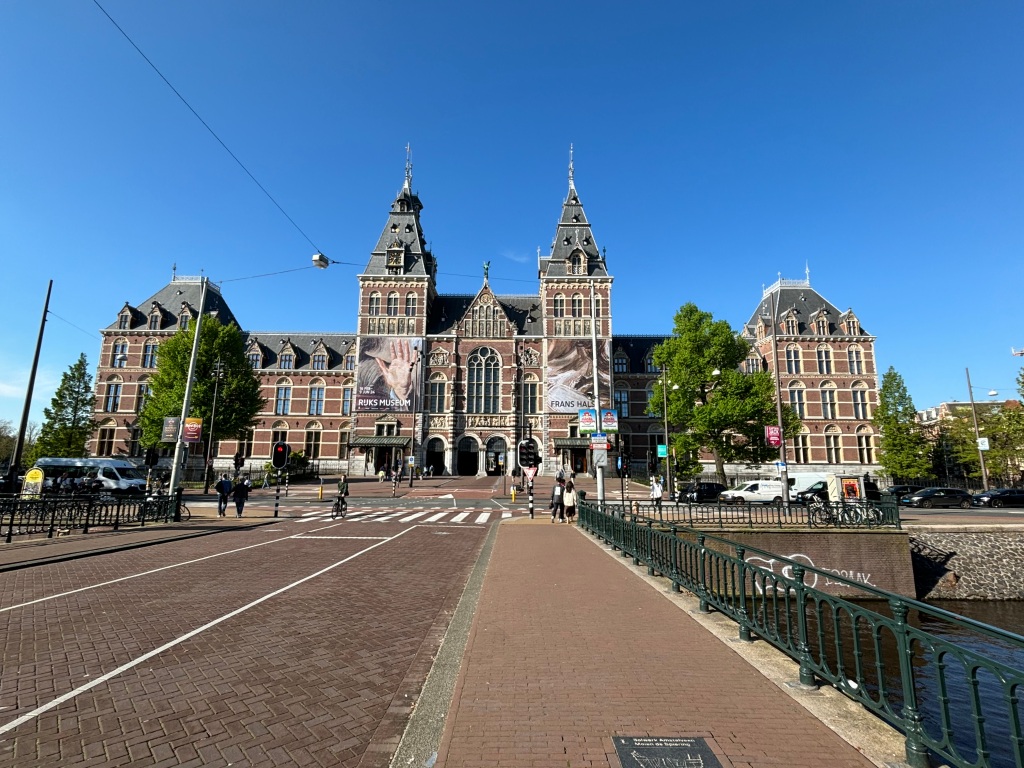
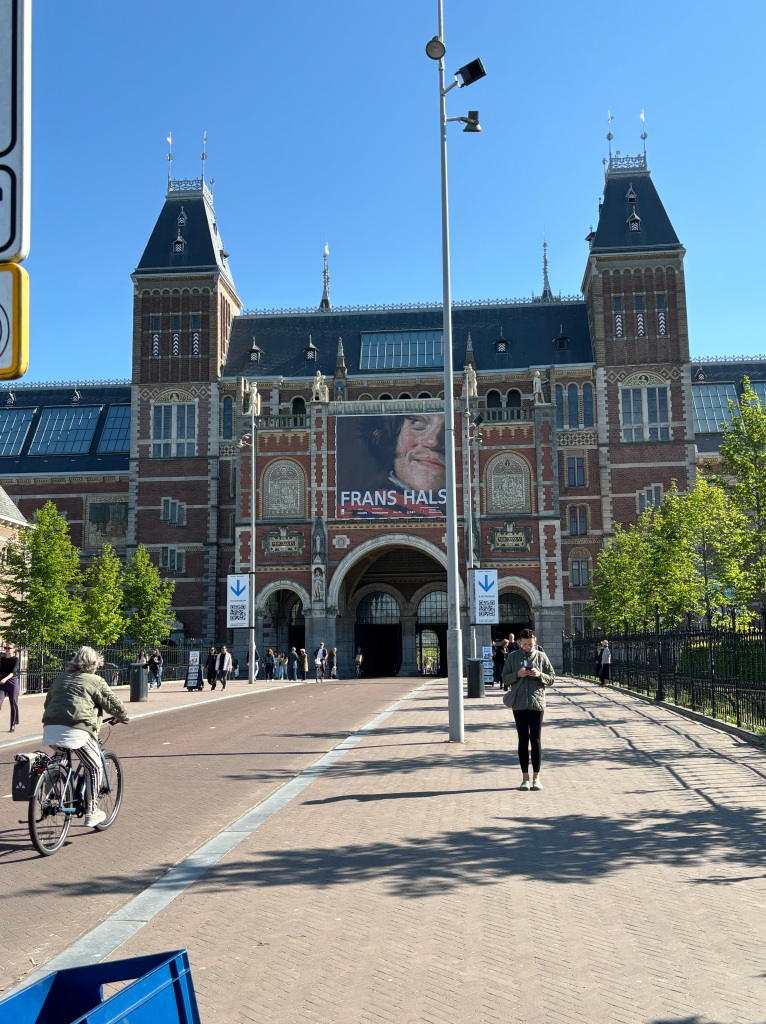
The Rijksmuseum is the national museum of the Netherlands, designed to tell the story of more than 800 years of Dutch history – from the year 1200 to now – through the lens of art. It was originally housed in Den Hague and contained only 200 items. Its current building was opened in 1885 and today contains more than 1,000 works of art. The museum has over 8,000 items in its possession that it rotates in and out. Our visit concentrated on what is referred to as the permanent collection.
As we entered this area of the museum we were greeted by magnificent stain glass windows. You might have noticed the Neo Gothic architecture of the building, which looks much like a church. These stain glass windows are reminiscent of those you see in churches, but instead of saints or famous people of the Bible the windows in the Rijksmuseum contain images of famous artists and fishermen. Why fishermen, you ask? Fishermen played a critical part in the development of the Dutch economy that had a tremendous ripple effect on society at large and art in particular. The fishermen developed a way to preserve herring so that it could be stored for long periods of time, which meant people could travel more extensively, which allowed for expeditions to explore unknown territories, which created industry that made wealth available to a larger variety of individuals, which mean more individuals had the spending power to commission portraits, which were the most common form of art at the time. Portraits became a very lucrative form of art.
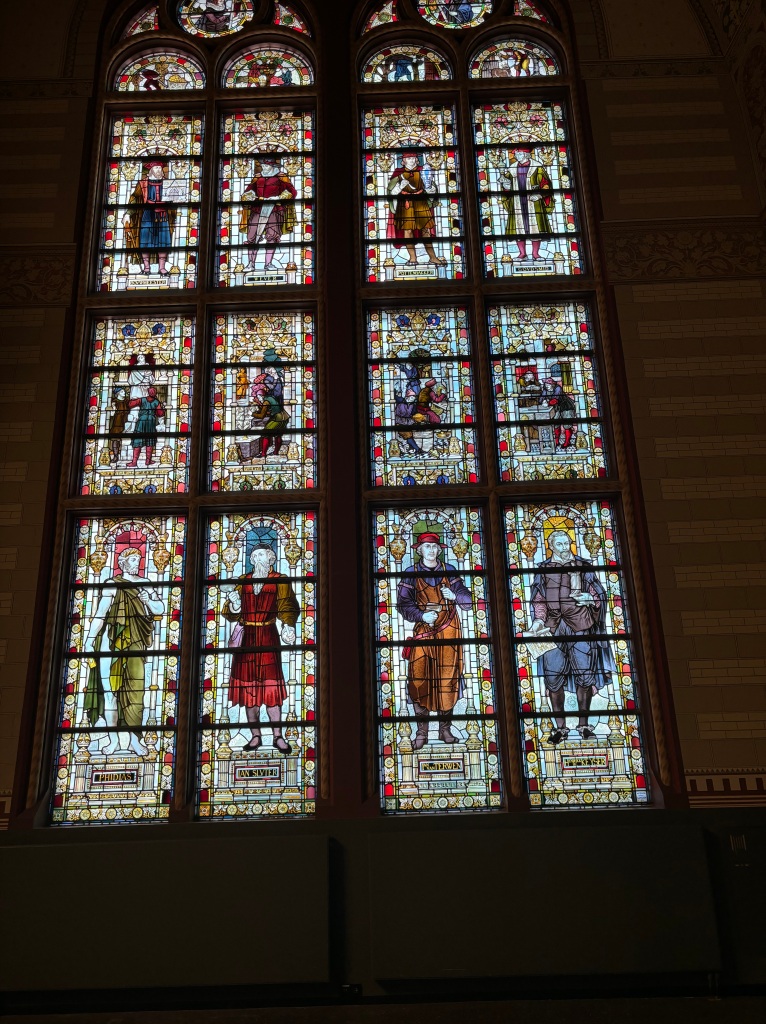
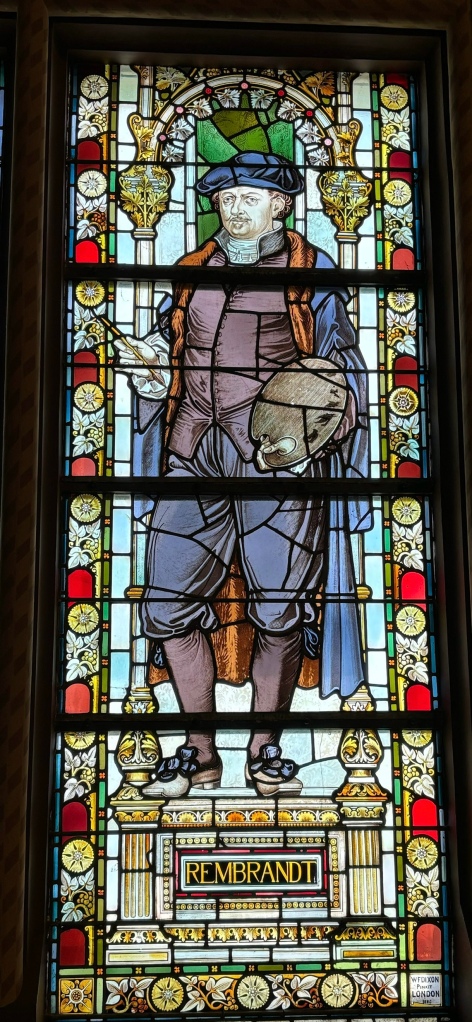
This painting was done in the early 1600s. It could have been titled “The Good Life;” it depicts many of life’s pleasures at the time. The woman playing the lute on the right, the pearl earrings being worn by the woman in the middle – all suggest luxury. The toiletries on the table, including the mirror, allude to vanity. The bed and two men entering carrying a rabbit and a bird symbolize euphemisms of the time for making love. It’s amazing what one can see when we just take the time to look!

Another painting from this era serves as a sort of public service announcement about over-indulging. Moving from right to left we see the behavior of the individuals deteriorating, with a man unable to walk on his own falling down by the pigs, two men in the background fighting, etc.
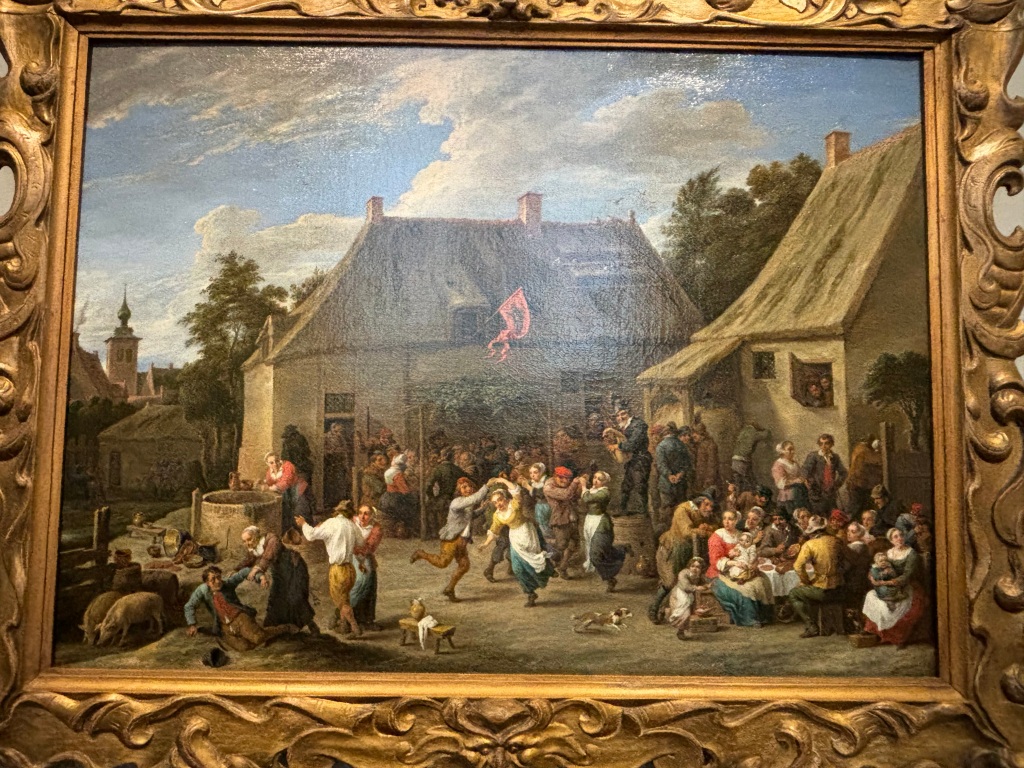
In the late 1500s, early 1600s the Dutch had an excellent relationship with the Emperor of China. Many gifts were exchanged, the most popular of which for the Dutch were items of porcelain decorated with cobalt blue. In 1620 the Emperor died, creating a gap in that friendship. During the same period many breweries from the Dutch town of Delft were relocating to Amsterdam where the population and business opportunities were booming. The abandoned breweries provided the perfect space for making pottery. The people of Delft seized the opportunity and Delft Blue was born. Delft
Blue is a white ceramic pottery with blue decorations produced in Delft and considered as much a part of Dutch culture as windmills and wooden shoes.
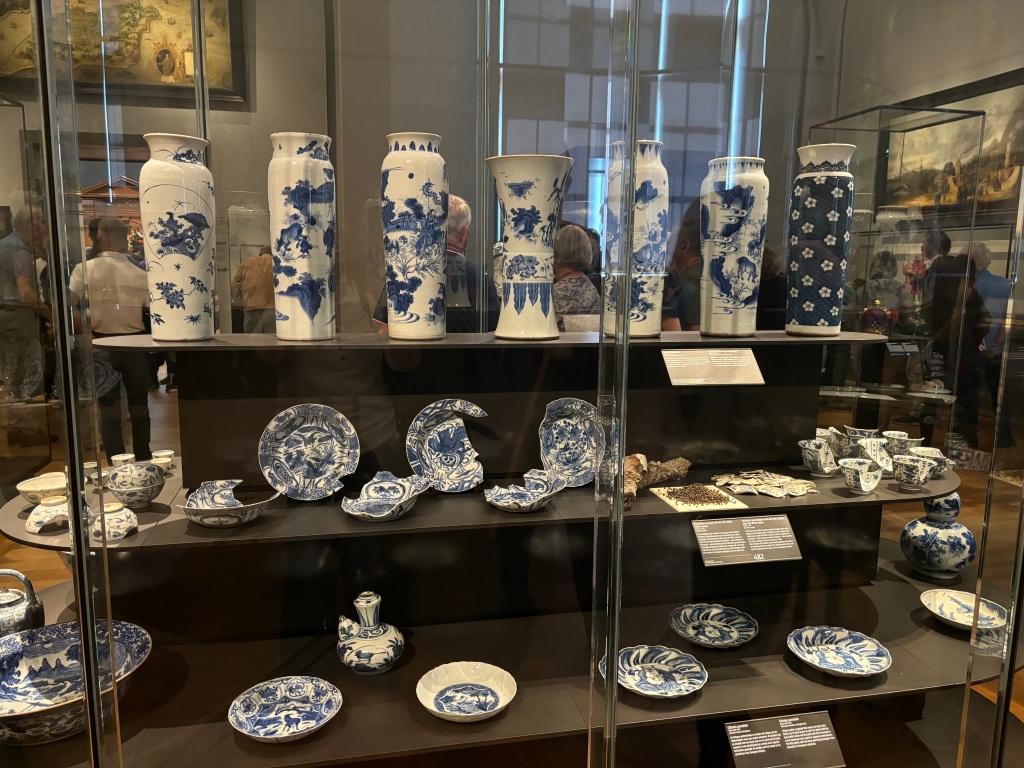
The Muenster Treaty of 1648 marked the formal recognition of the Independent Dutch Republic. What’s remarkable about the painting commemorating the event is that the individuals in the painting did not sit for it at the same time. Each individual sat for the painting at a different time, and their placement in the painting reflects the amount they paid to be in it. The more you paid the more prominently you were featured. The painting also reflects cultural events of the time. The young men in the painting have longer hair, a reflection of the “hair wars” going on at the time. According to one article, “In early modern Europe, dress was regulated by “sumptuary laws”. These regulations set out who could wear what and when, according to a hierarchy of privileges believed to be accorded by god. Some of the laws related not just to clothing but also to hair. In 1637, for example, the authorities of the city of Basel prohibited its male inhabitants from wearing “hair and long tresses that are unseemly and unnecessarily ample and long, that hang down over the eyes, as well as artificial hair and hairpieces.” This led to a four-year cultural “war” where young people openly defied the law and wore their hair long.
You also see fashion movements at play here. The older generation is still wearing mostly dark colors, while the younger generation has begun experimenting with more flamboyant colors and styles. They would buy cheap used fabric items at flea markets and repurpose it into clothing, dressing it up as much as possible.
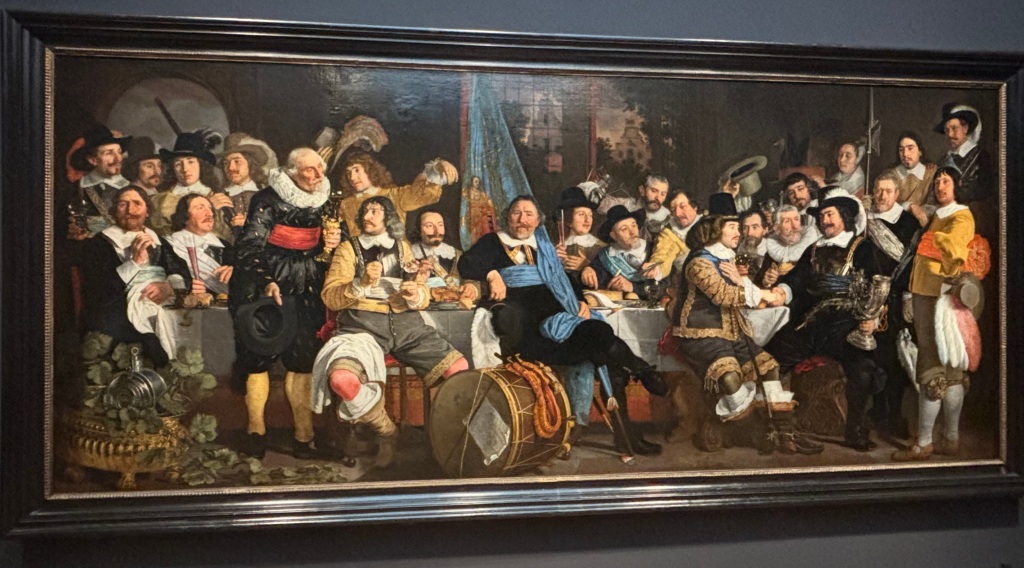
This painting is a subtle reminder to pay attention to what we see to understand what’s being said. At first glance we’re struck by the vibrancy of the painting, but upon closer inspection you see that the flowers are wilting, the walls in the background are deteriorating, there is a small mouse feasting on fallen petals. One of the flowers is a red-and-white striped tulip, a flower that was very hard to come by at the time, and therefore very expensive, a recognized symbol of wealth. The message of the painting is that nothing lasts forever.

The “Night Watch” is one of Rembrandt’s most famous paintings. It is said to be to the Rijksmuseum what the Mona Lisa is to the Louvre in Paris. Measuring 12′ 4″ x 14′ 9″ it was commissioned in 1639 by a group of civil militiamen to hang in their banquet hall with several other paintings commissioned by other artists. Because of the size of the painting Rembrandt knew it would have to be rolled to be stored. Traditional paints would crack if rolled, so he created a different paint that would withstand the rolling. However, over time this paint began to darken, leading to the “Night Watch” nickname. The painting does not depict a night scene and was not originally called that.

Our final portrait is of the main himself – Rembrandt.
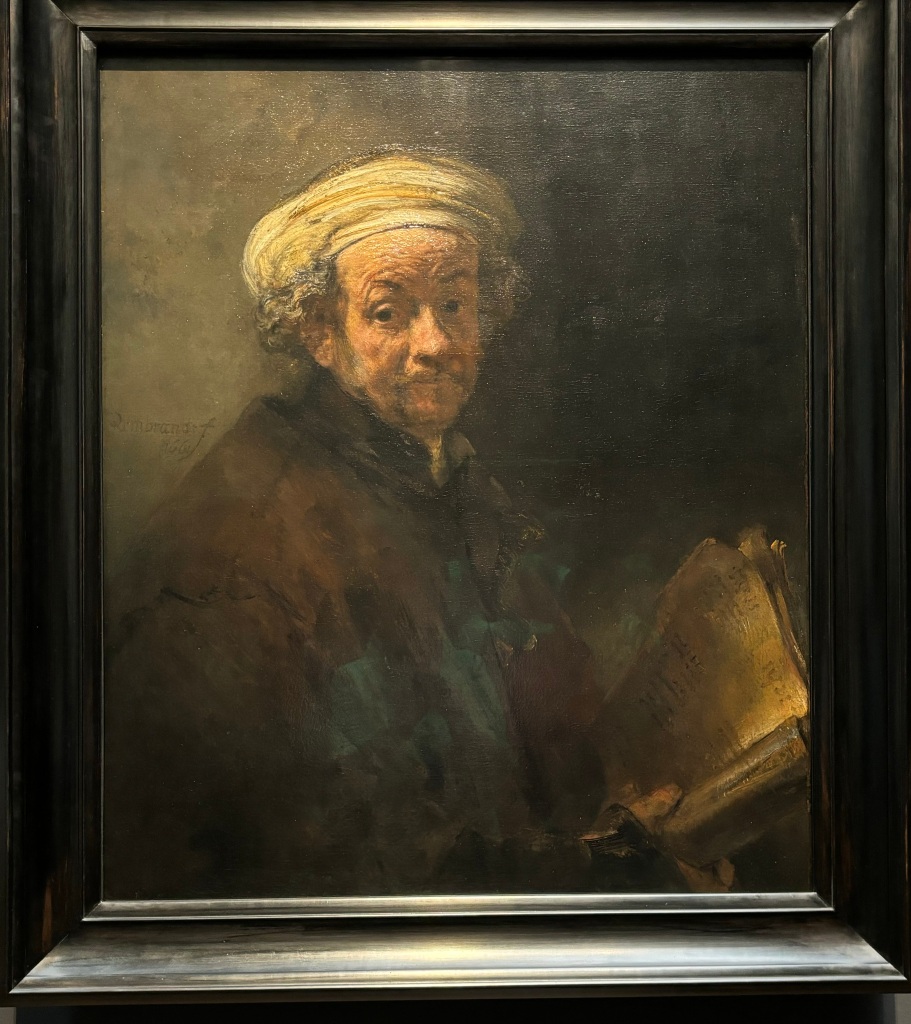

Amazing
LikeLike